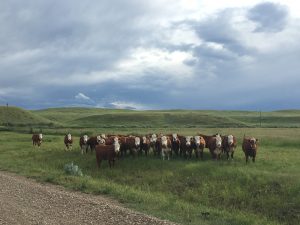University of Alberta Folio – February 18, 2022 – by Michael Brown

Ranchers who frequently rotate cattle between fields — resembling how bison once moved across Canada’s prairie — build drought resistance into Western Canada’s grasslands, according to a series of University of Alberta studies designed to find ways to improve the net carbon balance of grazed grasslands and nurture more resilient landscapes.
“The way we manage those grasslands has far-reaching implications for biodiversity, climate and food safety,” said Timm Döbert, post-doctoral fellow in the Faculty of Science and lead of a recent study published in the journal Geoderma.
For the five-year project, the team looked at adaptive multi-paddock (AMP) grazing, a type of rotational grazing characterized by high animal unit densities, small paddocks and short periods of grazing followed by a long rest period.
The work was spearheaded by ecologist Mark Boyce in the Department of Biological Sciences, in close collaboration with an interdisciplinary team of scientists including Edward Bork, Scott Chang, Scott Jeffrey and Cam Carlyle in the Faculty of Agricultural, Life & Environmental Sciences.
The studies were published in Geoderma, Science of the Total Environment and Agronomy.
Read entire Folio article about the adaptive multi-paddock grazing study.
